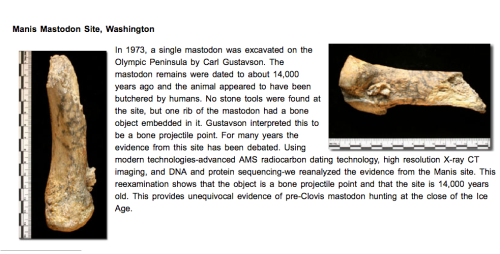For a long time, the Manis Mastodon site near Sequim, Washington was the elephant in the room of the Northwest Coast early period. The apparent bone point embedded in a mastodon rib was seemingly hard to explain by any non-cultural means, yet maddeningly short of definitive proof, and so was politely ignored. The point has always been a thorn in my side too, which is why I have posted on it three times, once over a year ago, and twice recently.
Maybe I am a bit obsessed with it because if I rise gently from my sofa in Blog World Headquarters, being careful not to spill fine single malt on my pyjamas, then through my window I can see Sequim in the extreme distance, seemingly mocking me.
So all the more cathartic that today, with the publication of a convincing re-analysis of the mastodon rib by Michael Waters et al. in the respected journal Science, we can say that the site is, indeed, evidence of humans hunting Mastodon on the Northwest Coast 13,800 years ago. That’s about eight hundred years pre-Clovis. Like I said before: it’s real. It’s old. It’s on the coast. Wow.












